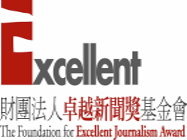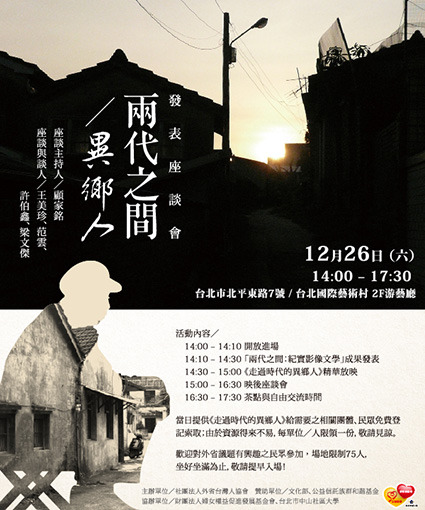科技思維有助於新聞業的發展─「傳媒與教育」電子報─智邦公益電子報
enews.url.com.tw · March 13,2018科技思維有助於新聞業的發展(上)/朱弘川編譯
The tech/editorial culture clash
科技思維有助於新聞業的發展(上)
At this year’s annual meeting of the Online News Association in Denver, many of the 2,000 attendees and delegates crowded into the opening keynote address. In the middle of the most charged US election in living memory, at a time when the relevance and role of the news media were under intense scrutiny, the assembled newsroom operatives were not coming to hear a leading editor or garlanded correspondent give insights on the upcoming election or the state of the world. Instead, they listened intently to Fidji Simo, Facebook’s director of product, talk about how the future is all about giving users more of what they want.
在美國丹佛舉辦的網路新聞協會(Online News Association,ONA)年會上,現場2000名與會者和代表大多是衝著這次的開幕演講而來。在充滿高張力的美國總統大選期間,也是新聞媒體受到嚴格管控的時期,齊聚一堂的新聞工作者,並不是來聽某位總編輯或記者,對即將到來的選舉或國際情勢發表高見。相反的,臉書產品總監Fidji Simo有關未來如何滿足用戶更多需求的演講,更令他們感到興趣。
The intertwining of interests between enormously powerful technology companies and every news organization on the planet has troubled both sides. Mark Zuckerberg has firmly stated he does not see Facebook as a media company, but as a technology company. Journalists at the Online News Association, known as ONA, were skeptical about the influence of technology companies, though aware of the interdependence. “To tell the truth, they are keeping us alive at the moment,” said the founder of a small news startup. “If it wasn’t for advertising from Facebook pages, we might not be here.”
這些科技公司和地球上的每一個新聞機構之間的利益交織,也同時困擾著雙方。Mark Zuckerberg曾堅決地表示,他不認為臉書是一家媒體公司,而是一家科技公司。網路新聞協會的記者則對科技公司的影響持懷疑態度,儘管了解到這是個相互依存情況。「老實說,他們讓我們得以生存,此時此刻」,一個小型新聞組織的創辦人說。「若不是臉書的網頁廣告,我們可能不會聚在這裡」。
Another technologist working with international newsrooms was far more dogmatic in questioning the motives and values of the Silicon Valley interlopers: “They are not your friends. They are interested only in growth and money, and once news is dependent on them, they will turn off the traffic tap and start charging.”
另一位常與國際型新聞機構合作的技術人員,則對這群來自矽谷的攪局者不敢苟同:「他們不是你的朋友,他們只對未來發展和金錢感興趣,一旦新聞業依賴他們,他們將關閉流量的大門,並開始索取費用」。
The mutual unease in this new pact is symptomatic of a deeper, systemic dysfunction in the relationship between journalism and production technologies. The cultures of journalism and software development are ostensibly working toward the same goal—organizing information, informing the public, generating money from advertising—but in most respects, they are very different. In 1959, the British public intellectual C. P. Snow famously identified what he called the “two cultures” into which society was divided: “literary intellectuals at one pole—at the other, scientists,” he wrote. “Between the two a gulf of incomprehension—sometimes…hostility and dislike, but most of all a lack of understanding.”
這一新協議所造成的不安,突顯的是新聞業和生產科技之間,存在著更深層的系統性問題。新聞業和軟體開發者的組織文化,表面上雖有共同的目標,像是整合資訊、通知公眾和透過廣告賺錢,但在其他方面,他們是非常不同的。在1959年,英國公共知識分子C.P. Snow曾提出所謂的「兩種文化」(two cultures)觀點,說明了社會被分為兩個極端:「文學知識分子在一個極端,而科學家則在另一個極端」,他寫道。「在兩者之間有一個難以理解的分歧,有時敵對和不喜歡,但最重要的是缺乏理解」。
The concepts and dissonance Snow described will be familiar to anyone who has worked to assimilate legacy media companies into the digital environment. While many fields have been disrupted by automation and computation, few have converged as abruptly and as publicly as software engineering and journalism. The news media is witnessing its business models and production processes being remade by Web publishers and search engines. Google, Apple, Facebook, and Amazon have replaced media companies as the most important information delivery mechanisms within the space of a decade. Every major news event in the world, from bombs raining down on Aleppo to the late night tweeting of presidential candidates, is broken through social media and seen through our luminous mobile phone screens. Facebook’s value is now over $360 billion, twice as much as that of The Walt Disney Co., its nearest traditional media rival.
Snow所提到的不和諧概念,對於曾經試圖將傳統媒體和現今數位生態連結的人來說並不陌生;雖然在許多層面已經被自動化的計算干擾,但也有少部份就自然地融合在一起,像是軟體工程和新聞業的合作。新聞媒體正見證的,是其商業模式和生產過程被網頁出版商和搜尋引擎重塑的過程,谷歌、蘋果、臉書和亞馬遜在過去10年已經取代了媒體公司作為重要的資訊傳遞機構。 世界上每一個重大新聞事件,無論敘利亞的炸彈襲擊事件,還是總統候選人深夜所發的推特訊息,都透過社交媒體傳送到我們的手機上。臉書的市值超過3600億美元,足足是與它市場規模相近的迪士尼(The Walt Disney)的兩倍。
The wealth and influence generated by Silicon Valley has devalued media owners’ and news executives’ political capital, and increasingly replaced them completely. Amazon founder Jeff Bezos bought The Washington Post for $250 million in 2013, when its former owner, Don Graham, acknowledged that his family no longer had the resources to keep the Post relevant in the digital era. With Bezos’s investment and under the editorship of Martin Baron, the Post is a resurgent and innovative force. Pierre Omidyar, who made a fortune as the founder of eBay, has invested in both a local news initiative in his home state of Hawaii, and in First Look Media, which owns The Intercept and invests in documentaries and films with a journalistic focus, including the Academy Award-winning Spotlight. (Omidyar’s Democracy Fund also supports CJR’s local news coverage.) Facebook co-founder Chris Hughes had a brief and less happy association with media when he bought the New Republic, triggering mass staff resignations and selling the title to publisher Win McCormack after only four years.
矽谷所生產的財富和影響力,使得媒體所有者和新聞高階主管的政治資本貶值,並有取而代之的趨勢。亞馬遜的創辦人Bezos在2013年以2.5億美元收購了華盛頓郵報,因為華郵的前任經營者Don Graham和其家族已經沒有足夠資源來保持華郵在數位時代的競爭力。有了Bezos的投資,和Martin Baron在編輯工作上的協助,華郵代表一個復甦和創新的力量。因創立eBay而致富的Pierre Omidyar,投資了他家鄉夏威夷的一個地方新聞節目,以及建立擁有網路媒體「攔截」(The Intercept)的First Look Media,也資助了一些新聞專業的紀錄片和電影,像是奪得奧斯卡獎的電影驚爆焦點(Spotlight)。臉書的共同創辦人Chris Hughes在買下美國百年老牌雜誌「新共和」(The New Republic)時,也有過一段短暫又不愉快的經驗,曾造成該媒體大量的離職潮,4年不到就轉售給媒體人Win McCormack。
The difference between the Silicon Valley and East Coast publishing mindsets was most dramatically illustrated during the Gawker lawsuit, whereby the media news and gossip website founded by British journalist Nick Denton was bankrupted in a privacy suit brought by wrestler Hulk Hogan and covertly funded by Silicon Valley investor and billionaire Peter Thiel. Thiel’s single-minded pursuit of Gawker was sparked by a 2007 story outing Thiel as gay. Thiel, often a supporter of free speech and the Committee to Protect Journalists, saw no inconsistency in successfully closing down Gawker. “I refuse to believe that journalism means massive privacy violations….I think much more highly of journalists than that,” Thiel told The New York Times. “It’s precisely because I respect journalists that I do not believe they are endangered by fighting back against Gawker.”
美國矽谷和東岸出版思維最大的區別,可從八卦網站Gawker的訴訟官司中得到答案。這個由英國記者Nick Denton創立的八卦新聞網站,因為和摔跤明星Hulk Hogan隱私訴訟官司而破產,而矽谷億萬富翁Thiel在其中扮演重要角色。Thiel一心針對Gawker而來,是因為2007年Gawker的一篇報導揭露了Thiel的同性戀傾向;Thiel捍衛言論自由,同時也是保護記者委員會(Committee to Protect Journalists)的支持者,但卻毫不猶豫的讓Gawker倒閉。「我不相信新聞業就應該和大規模的侵犯隱私畫上等號,我認為記者遠比這更加重要」Thiel告訴紐約時報,「正因為我尊重記者,所以我認為他們不該因這件事而受到傷害」。
Thiel could not see what made many journalists uneasy: that the operation of a free press is not a case of picking the people whose journalism you approve of, and closing those you don’t. In the world of billionaire technologists, the prize lies in creating the most efficient and logical systems possible, cutting the “best” path for users or customers. Anything that stops the progression to seamless scale must be eliminated or “debugged.” In engineering, there is always a right answer, whereas in journalism, there are only more questions.
Thiel看不出是什麼原因讓許多記者不安:新聞自由的運作並不是挑選你認可的新聞報導,並將那些你不認可的新聞拒於門外。在億萬富翁和科技人的世界裡,目的在於盡可能創造最有效的邏輯系統,為用戶或客戶提出「最佳」的路徑,任何阻礙這項過程的困素都必須被排除或「除錯」。在工程領域中,總是有一個正確的答案,而在新聞業,這樣的做法只會有更多的問題。
Shortly after Omidyar established First Look Media, he held a series of meetings with journalists, academics, and technologists to think about what a new model news organization ought to look like. During one session in the basement of his Laguna Beach resort hotel, the exchanges became heated around how and where the technologists ought to work. Surely in the heart of the newsroom, a number of us argued, as the ideal would be a journalistic process rethought and designed to benefit from a deep knowledge of the technology behind it. “But engineers and journalists are so different, surely that is not going to work?” came the response.
在Omidyar成立First Look Media不久後,他舉行了一系列與記者、學術界和科技人的會談,希望了解未來新聞機構的經營模式。在Omidyar位於拉古納海灘度假酒店地下室的一次會議中,「科技人的未來該何去何從」此議題讓現場交流頓時變得熱絡起來;當然,身為新聞編輯室的核心,在現場的我們以及一些出席者,將新聞過程重新思考,並輔以一個受益於科技知識的架構是最理想的辦法,只是仍有人回應「工程師和記者是如此不同,這方法肯定是行不通的」。
There are many different kinds of technologists and many different kinds of journalists, and a large number of them intersect. The best data journalists are often gifted technologists, and the most creative developers can make far more progress in building future applications for news than someone whose main skills are writing or making videos. In most newsrooms, what was once a hostility by journalists toward “the techies” has become an admiration and understanding that journalists with the right technical skills hold the keys to the survival and health of the field. Diversity in thinking about how to tackle stories or harder problems in the organization of our reporting and information has undoubtedly made journalism better.
許多不同類別的科技人才和記者,他們往往也能彼此合作。最好的資料記者通常也是優秀的科技人才;具有創意的開發人員,則比專職寫作或製作影像的人才,更能在構建未來的新聞應用方面做出貢獻。在大多數的新聞編輯部,記者曾經對「技術人員」的抱有敵意,現在則多了分欽佩和理解,因為具有正確科技技能的記者,才是現今新聞領域生存的關鍵。目前對新聞報導和資訊的要求下,多樣性的思考有助於追蹤線索和處理棘手的問題,這無疑會使新聞業變得更好。
---------
作者:Emily Bell
編譯:朱弘川
原文網址: http://www.cjr.org/analysis/tech_editorial_facebook.php
科技思維有助於新聞業的發展(下)/朱弘川編譯
The tech/editorial culture clash
科技思維有助於新聞業的發展(下)
I was once wandering round The Guardian’s digital floor, where I was, at the time, a senior editor, when I saw a group of technologists from an engineering firm arranged in a circle, passing a rubber chicken between them. The engineers were helping with a large project, but the chicken ritual was baffling. I asked a colleague about it. “The chicken is like a talking stick,” she explained. “The developers need to know that when the chicken gets to them, they have to describe their work for the day and offer comments on anyone else’s work….otherwise they might just not be able to tell us something important.”
有一次我在衛報的數位部門徘徊,當時還是個資深編輯的我,看到一組來自工程公司的科技人員圍成一個圈子,彼此傳遞一個橡皮雞;這些工程師正在幫助衛報進行一個大型計劃,但「雞」的儀式令人困惑。一個同事告訴我:「雞就像一個說話杖」,「開發人員需要知道,當雞傳到自己手上時,拿著橡皮雞的人必須描述自身的工作內容,並對其他人的工作發表評論......不然,工程師恐怕無法將重要的事情表達出來」。
In a news organization, the idea that a group of colleagues would need a rubber chicken as an aid to self-expression was anathema. Journalists offered opinions freely, particularly on the subject of the digital landscape, often with little or no evidentiary basis. Working between teams of developers and journalists, it was easy to discern where the differences in culture and understanding lay. Technologists necessarily needed precision and certainty, while journalists frolicked amid ambiguity and uncertainty. What I regarded as a complete coup as an editor—launching a site in a very short time on third-party technology—made the tech team wince and say, “We should never ever do that again.” What I saw as a tactical triumph, they interpreted as a strategic disaster. While their route would have cost much less long-term “technical debt,” my route took two and a half years less to complete.
在一個新聞機構中,一組同事需要使用一個橡皮雞來自我表達是令人難受的。 記者往往能自由地提出看法,特別是在那些不太需要任何證據基礎的數位內容主題上。從開發團隊和記者團隊之間,我們很容易辨別彼此文化之間的落差;技術人員講求精確度和確定性,而記者則在模糊和不確定性之間遊離。作為一個編輯,我突然靈機一動,短時間內在第三方科技上設立一個網站,迫使科技團隊退縮和表態:「我們永遠不該再這麼做」。我所看到的是策略上的勝利,他們卻認為是戰略上的災難。雖然他們路線的成本遠遠低於長期的「技術債務」,但我的路線花了兩年半的時間才完成。
This cultural difference was written through every page of the now famous leaked New York Times innovation report of 2014, often in a tone of primal frustration. One anonymous newsroom contributor to the report put it thus: “We have a tendency to pour resources into big one-time projects and work through the one-time fixes needed to create them and overlook the less glamorous work of creating tools, templates and permanent fixes that cumulatively can have a bigger impact by saving our digital journalists time and elevating the whole report. We greatly undervalue replicability.”
這種文化差異可從2014年紐約時報的創新報告看出些許端倪,即便內容仍是充滿著挫折感。報告中的一位匿名新聞編輯認為:「我們傾向把所有的資源都傾注在一個大計劃上,藉一次性的修改來完成這個計畫,並忽略最不迷人的創作工具、模版及例行性的修改,這些對於我們數位記者有很大的影響,因為可以省下很多時間,並提升報導的品質。我們大大的低估了複製性所帶來的好處」。
Mark Hansen, who leads the Brown Institute for Media Innovation co-located at the Columbia Journalism School and the Stanford Engineering School, sees enormous opportunity in making journalism a truly interdisciplinary field. “It is a lazy line of thinking to say that journalists and technologists occupy different spaces and always will,” he says. “Those caricatures are really not useful. Engineers are incentivized to think differently, as are journalists. But plenty of engineers think like journalists, and vice versa.”
布朗媒體創新學院(Brown Institute for Media Innovation)主任Mark Hansen認為,現在是新聞學成為跨學科領域的絕佳機會,他說:「刻意區分記者和技術人員的分別是懶惰的想法」,也提及「這些嘲諷沒有多大的幫助,工程師被鼓勵以不同的角度思考,記者同樣也是。但許多工程師卻被認為像記者,反之亦然」。
Journalistic innovation now often means keeping pace with the largest and most agile of the social media companies. New entrants into the journalism market, like BuzzFeed, have made a point and a business of staying as close to the development of companies like Facebook as possible. Others, like Vox, have focused on making their own in-house technologies that are as good as anything Silicon Valley might produce. A new classification of newsroom jobs in “product teams” has been part of the response to this cultural friction. (Journalists of a particular generation detest the word “product,” with its nakedly commercial overtones, or the idea that news is ever a product rather than a process; but in these culture wars, it seems, technology wins even when it comes to language.)
新聞上的創新,通常意味著得跟上社交媒體公司的步調,新聞市場的新進入者,如BuzzFeed已有相當的成果,並盡可能和臉書所發展的業務保持同步;像Vox這樣的公司則專注於提升自己的內部技術,這些技術與矽谷相比也不遑多讓。新聞編輯室的新部門「產品團隊」(product team),便是這種文化摩擦下的產物,特定世代的記者以「裸露的商業色彩」或「新聞被視為產品而不是個過程」的觀點來譴責「產品」一詞,但是在這場文化戰爭中,科技似乎總是佔了上風。
Product teams, social media editors, and curation desks are becoming increasingly present in all newsrooms; the cultural friction between these entities and traditional editorial roles might remain, but it is no longer where the key tension lies. The rise of platform companies is having a particularly strong impact on the news app and product teams of news organizations. Facebook, Google, Snapchat, and Apple have all built impressive new ways for news organizations to distribute their journalism, and in the case of Facebook, new ways to actually assemble and tell stories. Huge teams of developers work on video and photographic applications that would be difficult for individual news organizations to develop even if they wanted to. Facebook Live, which Mark Zuckerberg described as “a TV camera in your pocket,” can stream simultaneous live videos from anyone with a Facebook account and a fast enough internet connection.
產品團隊、社交媒體編輯和策展部門,已逐漸出現在新聞編輯室中,這些部門和傳統編輯之間的文化摩擦仍可能存在,但不再是緊張的局面。平台公司的興起,對於新聞組織中新聞的應用和產品團隊產生了強烈的影響;臉書、谷歌、Snapchat和蘋果都為新聞組織創造了令人印象深刻的新聞傳遞模式。以臉書的例子來說,新的模式更能準確的說故事,大型的開發團隊相較於個別新聞機構,更能開發影像和攝影相關的技術;像是被Zuckerberg稱做「口袋裡的攝影機」的臉書直播(Facebook Live),只要透過臉書帳戶和足夠的頻寬,便能傳輸即時影像。
When Simo was asked at ONA whether Facebook is in fact a media company, she was more measured than her boss. “We play a big role in the media industry and we take that responsibility very seriously,” she said. “The reason we primarily consider ourselves a technology company is because we don’t create content, and we are not in the business of picking which topic the world should care about. What we really care about is making everyone have an experience in News Feed where they see what they want to see.”
當Simo在ONA年會上被問到臉書是否為一個媒體公司時,她比她的老闆有更多的思量:「我們在媒體產業發揮了重要的作用,我們非常重視此一責任,」、「我們認為臉書是一家科技公司的原因是因為我們不生產內容,我們不為世界挑選應該關心的話題;我們真正關心的是動態消息(News Feed)的使用經驗,以及讓人們看到他們想看到的」。
The looming question for many newsrooms is how much to invest in their own technology teams versus using the tools and techniques being developed for them by Facebook or Google? It is almost impossible to get news executives to speak on the record about this, as many are already involved in deals with social media or search companies, but the views of those who are most alarmed by this could not be clearer: “What will happen, if we are not careful, is that the only technologists we will continue to employ will be those who can work on integrating whatever the news organization is doing into their platform,” one executive told me. “Independent thought and independent development will be at an end.”
許多新聞編輯室面臨的問題是,該如何投資自己的科技團隊,而不是使用臉書或谷歌為他們開發的工具和技術?我們很難讓新聞主管回答這方面的問題,因為許多人已參與了社交媒體或網路搜尋公司的業務,但最令人擔憂的莫過於:「未來會是什麼情況?如果我們稍不注意,不管未來新聞組織有何作為,我們所僱用的技術人才,肯定也是那些能將內容整合到這些網路平台的人」,一位高階主管告訴我。「獨立思考和獨立發展的榮景將不復見」。
Another was even more forthright: “What have technology companies done, really, apart from make journalism worse? A couple of years ago, amazingly inventive interactives and graphics were [at the] top of the most-viewed lists at news sites. You wouldn’t get that kind of creativity today because they don’t work with Facebook Instant Articles.”
另一個回應更直截了當:「除了使新聞更糟糕,科技公司到底做了什麼?幾年前,新聞網站上最受歡迎的,是令人讚嘆的創新互動模式和圖像,但你今天不會視那樣的表現為創意,因為他們無法和臉書的即時新聞(Instant Article)連結」。
Without an informed and independent lens on the work of large technology companies, news organizations could easily surrender to the idea that they no longer belong in the business of shaping their own formats and production tools. But independent and creative advocacy for its own technologies is one of the most powerful ways journalism can retain its relevance.
若沒有科技公司在這方面的努力,新聞組織也大可放棄開發自有格式和生產工具的想法;但是追求技術上的獨立和創造性,一直都是新聞業保持其影響力的最有效方式之一。
It was once the case that more technology-focused resources potentially meant fewer reporters in the newsroom. That choice can now be seen for what it always was: a false bargain. As reporting and technology converge, it is not a matter of journalists learning code, but of journalism becoming code.
曾經有這樣的說法,愈強調技術導向的作法,意味著記者將失去他的舞台,這樣的說法我們可以視為是毫無根據的。隨著新聞報導和科技的融合,這不再是記者要不要學習寫程式的問題,而是新聞數位化已是不可逆的趨勢。
Twitter is, I still believe, the most important innovation for journalists since the telephone. I use it to find stories, keep track of sources, and find out what is being said. I think all journalists do, which is why I encourage students to build a profile there. Being a bad journalist but being good on Twitter will not help your career, but being a good journalist and knowing how to use Twitter effectively for news sourcing and reporting is now a core requirement for reporters. I use it all the time, though post less and less, mainly because I don’t have time, but also partly because being “good on Twitter” is like everything else: You have to keep doing it or lose the knack. Also, I’m married to a journalist, and if you are not on Twitter you end up having nothing to talk about apart from the children.
我仍然相信,推特是自電話以來,對記者來說最重要的發明。我使用它來找尋報導題材和追蹤相關線索,並了解完整的內容;我認為所有的記者都是這樣,所以我鼓勵我的學生都建立一個推特帳號。擅長使用推特不會幫助你的記者生涯,但作為一個好記者,知道如何有效地使用推特進行新聞蒐集和報導,這對記者來說是必備條件。我一直使用推特,雖然發佈量越來越少,主要是因為我沒有時間,但部分原因是花愈多時間在推特上,你得持續下去,不然久了也會生疏。不過,我嫁給了一個記者,如果不使用推特,等於除了孩子的話題外,我們之間沒啥好談的。
---------
作者:Emily Bell
編譯:朱弘川
原文網址: http://www.cjr.org/analysis/tech_editorial_facebook.php
新媒體與線上社交網絡分析/吳淑鈴
「你的同學會讓你變胖嗎?」宋韵雅堆起滿臉笑容詢問,現場聽眾立刻竄出一陣笑聲。她認真解釋,這是社會學的經典問題,即「物以類聚,人以群分」;要追問的是社會學背後的兩個運作機制,一是選擇型機制,另一個是影響型機制。前者是指一個不瘦的人,選擇了同樣不瘦的朋友;後者是不瘦的人每次找瘦的朋友吃消夜等,長期累積後產生的改變。

「新媒體與線上社交網路分析」主講人,香港浸會大學新聞系宋韵雅助理教授
師大大傳所、台大新聞所與交大傳播與科技學系於2016年12月16日到17日舉辦為期兩天的「臺港傳播碰撞與想像工作坊」,討論了包含新聞政治與新聞社會學、網路政策、新媒體使用與創新思考等豐富多元的議題。12月17日最後一場的議題「新媒體與線上社交網路分析」,由台大新聞所教授張錦華擔任主持人,香港浸會大學新聞系宋韵雅助理教授主講,她從社交網絡的角度分析新媒體的相關應用和人際現象。
情緒促成動員:社群媒體的情緒擴散以憤怒最高
宋韵雅說,我們被嵌入在朋友、家人、同事和更廣闊的社會網絡中。在人類多樣的行為型態裡,不管是快樂的情緒或是肥胖的樣態,可以探討的是「在人與人相互傳播的同時,藉由展示網絡中自身所處的位置,如何影響你不知道的生活?而我們又能做什麼來充分利用這種連結?」
「持相同情緒的社交媒體用戶之間往往有最頻繁的互動和最緊密的連結。」宋韵雅說,根據情緒的相關研究指出,社群媒體中的情緒擴散,以憤怒(anger)情緒最高,其次是積極(active);這種情緒的影響常用來討論社交媒體的情感聚合和動員功能。
由點(個人)出發:透過朋友網絡預測用戶偏好
許多新媒體應用程式是依附強大的社交工具而出現。宋韵雅表示,譬如中國的「QQ音樂」即依附著QQ(中國騰訊網推出的社交平台),用戶登陸QQ音樂後,可以看到動態欄中顯示的好友音樂動態,同時用戶還能綁定自己的微博帳號,把音樂分享給微博好友。同時,使用者可以透過編輯功能產生歌單並分享給好友,具有自媒體作用。另外在「明星部落」的功能中,QQ音樂能讓粉絲之間交流互動,形成一定的社交規模。
對於新應用程式開發者而言,應用網絡結構是重要的依據。「一旦流行趨勢由點出發,透過朋友網絡可以很快覆蓋整個用戶群體。這代表我們可以根據使用者好友的偏好來預測用戶的偏好,同時以資訊融合的方式更準確的掌握流行趨勢。」宋韵雅說,在社交網絡中,用戶和明星的關注關係對於推測使用者的音樂興趣具有重要作用;譬如某用戶追蹤A歌手,就能推測該用戶是A歌手的粉絲,應用程式就會推薦A歌手或與A風格相似的歌曲給該用戶,從而將網絡結構資料引入到傳統的推薦演算法中。
社會網絡的影響力由「弱關係」構成
宋韵雅整理了1990年代以來社交網絡的相關研究,介紹延伸而來的六度分隔理論、同質性假說、異質性假說、結構洞理論,以及回聲室與弱關係等論點。
在「回聲室vs.弱關係」的討論中,宋韵雅提到傳統觀點常將社交網絡視為只能提供相同視角的回聲室。她說,強關係因為彼此相似,可能瀏覽的都是相同的網站;而弱關係彼此差異較大,傾向於訪問不同的網站。依據2012年Facebook發布的研究報告發現,社交網絡用戶分享的多數信息來自弱關係,並因此成為重要的新觀點傳播媒介。
在人際關係的實際運作中,人們更有可能分享來自強關係的信息,但由於網路中的基數更大,Facebook中的多數信息傳播仍然來自弱關係。宋韵雅說,Facebook的研究顯示,儘管強關係的個體影響力很大,但總體而言,多數的影響力仍來自弱關係,亦即由弱關係構成的關係網絡規模更大。
「在Facebook、微信、微博、Twitter上,你可以擁有數千名好友,然而大量研究結果說明,其中大多數都是weak ties(弱關係),你擁有的穩定社交網絡人數存在上限。」宋韵雅以英國牛津大學的人類學家羅賓 • 鄧巴(Robin Dunbar)提出「150定律(Rule Of 150)」說明,該定律又稱「鄧巴數字」,是根據猿猴的智力與社交網絡推斷,人類智力允許人類擁有穩定社交網絡的人數大約是150人。
數位技術能否讓人們在維繫老朋友的同時,結交新朋友,從而擴大整個社交圈子?宋韵雅說,鄧巴給了明確的答案,「根據現在的發展情形,答案似乎是『不』。」
從屬性轉向行為 個體是基於相同結構位置組成群體

宋韵雅表示社會網絡分析的探討要素包括行動者、關係、節點、邊、結構,和動態等不同層級。
此外,宋韵雅也帶來許多豐富的實證研究,內容涵蓋使用者特性到不同領域的社交網絡擴散情形。其中包括比較中國和香港兩地人民上網使用情形、比較中國微博和Twitter熱門議題差異、網路意見領袖的角色、大使館社群圖、高校社群圖、媒體機構社群圖等等。
在社會網絡分析中,對行為的解釋由「個體屬性」轉向「限制行為主體」的網路特徵。宋韵雅解釋,在社會網絡中,人在社會環境中的相互作用是基於關係的一種模式或規則;亦即不強調研究個體屬性,而是強調研究人類行為的社會關係。她強調,這和過去的社會心理學在研究個體的時候,將人劃分為某種固定類型的做法不同;社會網絡關注的個體是透過「相同的結構位置」組成群體,而不是靠相同的類別化成員關係組成群體。
宋韵雅說,在社會網絡分析中,可深入探討的要素包括行動者、關係、節點(nodes)、邊(lines, edges)、結構(structures)、動態(dynamics)等,這些構成網絡研究的不同層級,也可依此提出社會網絡研究的不同議題領域。












